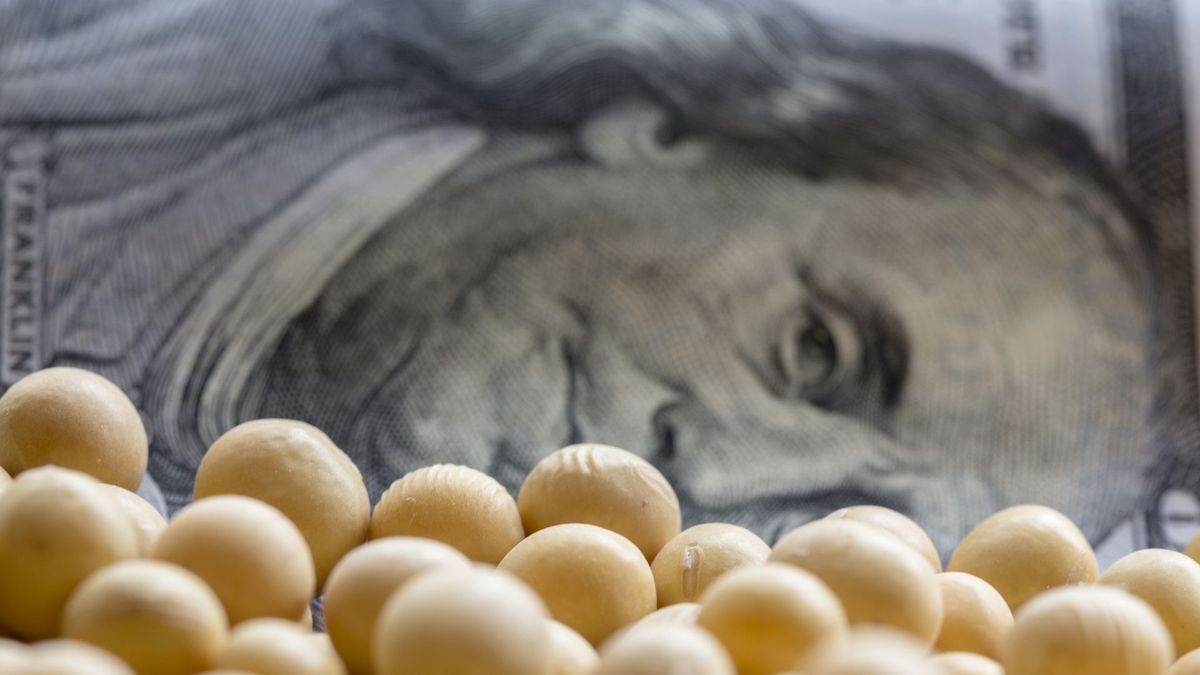However, other economists analyzed the “B” side of the measure. The IDESA consulting firm prepared a report in which it warned about the inflationary impact.
According to the consultant, “the so-called “soybean dollar” that consists of offering, only for September, $200 per dollar to the producers of the soybean complex. The official exchange rate remains at $140, which generates a special benefit of $60 for the soybean sector.. It is expected that some USD 5,000 million will be settled through this mechanism.
A very important aspect is that the entrance of dollars to the Central Bank implies monetary emission. The Central Bank issues pesos to buy the dollars from exporters. If those dollars are sold to importers, the issue is absorbed and would have no inflationary impact. But since it issues to buy “soy dollar” at $200 and sells them to importers at $140, there is a remaining issue of $60 per dollar obtained with “soy dollar”. In other words, in the extreme, even when reserves are not accumulated because 100% of the “soybean dollars” are used to pay for imports, there will still be monetary issue due to the $60 per dollar. This adds more inflationary pressures.
How much inflation does the soybean dollar add?
To answer this question, the consulting firm proposed the following scenarios assuming that the planned US$5 billion are settled:
- If all the dollars are accumulated as reserves, the Central Bank will have issued $1,000,000 million (5,000 x $200).
- If the dollars are sold to importers, the Central Bank will lose the reserves obtained and the remaining net issue will be $300,000 million (5,000 x $60).
- This implies that the monetary base will grow between 7% and 23% in addition to what it increases to cover the fiscal deficit and Leliqs interest.
“These data show that the additional monetary issue generated by the “soybean dollar” is of important magnitudes in a context where people no longer want to accept more pesos. The most paradoxical thing is that the more “successful” the government is accumulating reserves with the “soybean dollar”, more monetary issue will be dumped on the market. The situation will force the Central Bank to absorb the remaining issue, increasing the absorption of pesos with Leliqs. But this forces to pay more interest, which is another source of monetary issue. Currently, the issuance made by the Central Bank for the interests of the Leliqs equivalent to 9 million minimum pensions per month”, they affirmed.
“The “soybean dollar” can generate a transitory improvement in the reserves of the Central Bank. But it does so at the cost of adding inflationary pressures and enlarging the unstoppable snowball of the Leliqs. In the short term, exchange rate tensions are reduced, but they increase social tensions due to higher inflation. In addition, this dynamic of issuance and growth of the Leliqs, make it increasingly likely a traumatic outcome through a mega-devaluation that liquefies the excesses of pesos. It is perplexing that the increase in Central Bank reserves thanks to the “soybean dollar” ignoring the fact that more money is being generated, making the situation increasingly unsustainable.
The starting point is a misdiagnosis that leads to a mistaken obsession. Given the alarm generated by the fall in reserves, the obsession to obtain dollars is born. With diligence and enthusiasm, the “soybean dollar” was established and they traveled to the United States to try to unlock loans held by international organizations. But the correct diagnosis is that there is no lack of dollars in Argentina, but that there are plenty of pesos. As long as the issuance is not moderated, it is inevitable that the excesses of pesos put pressure on the reserves of the Central Bank,” they concluded.
Finally, in the same sense, the economist and national deputy of La Libertad Avanza, Javier Milei, referred: “He is issuing pesos to pay a differentiated dollar that he created,” said the liberal deputy and insisted that the issue is increasing ” that the government promised to stop doing”.
The legislator remarked that “the logic is to buy time for the crisis to break out for someone else” and explained that what they are doing is “an advance liquidation that creates an atmosphere known as ‘chicha calm’.” “They advance you dollars, they seek financing abroad to extend the time of the crisis, but they end up issuing the same,” he concluded.
Source: Ambito
David William is a talented author who has made a name for himself in the world of writing. He is a professional author who writes on a wide range of topics, from general interest to opinion news. David is currently working as a writer at 24 hours worlds where he brings his unique perspective and in-depth research to his articles, making them both informative and engaging.




